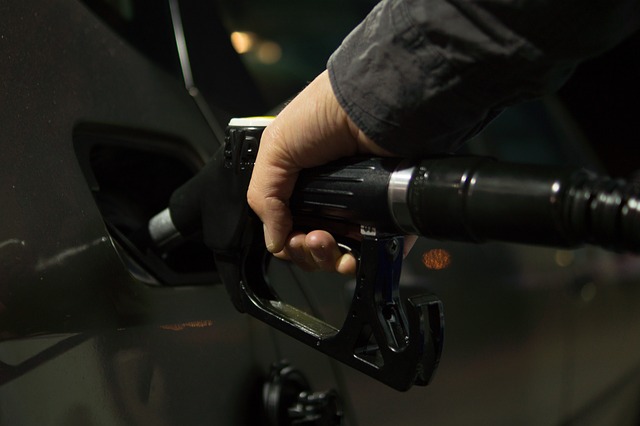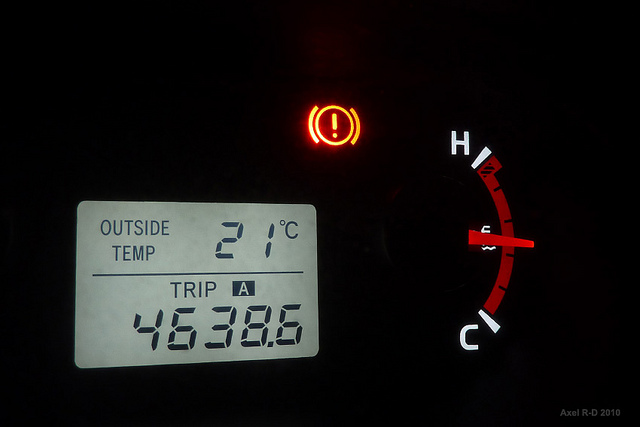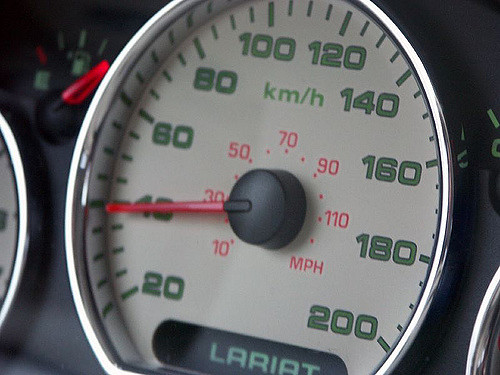MEL3E
Mathematics for Work and Everyday Life
Unit 4: Finding a Vehicle
Activity 5: Fuel Costs
If you own a vehicle, gas is just something you need to buy: you fill up the tank when it gets low. It's often hard to budget for fuel costs because it's not a fixed cost (the same amount every month) like your auto insurance. Instead, there are many factors that can affect your fuel costs from month to month.
 Factors Affecting Fuel Cost
Factors Affecting Fuel Cost
Make a list of all the factors that you can think of that affect fuel cost. Some will be obvious, but others might not be. Think about location, environmental conditions, driving behaviours and the vehicle itself when making your list.
Fuel Costs
It's important when purchasing or leasing a vehicle, to consider how much money it will cost you in fuel. In the Minds On activity, your class probably came up with a long list of factors that affect fuel cost. It would be difficult to use all of those factors to calculate your costs exactly, but you can estimate your fuel costs by considering the three most important factors.
- Fuel Consumption of the vehicle
- Cost of fuel per litre
- Distance travelled
In this activity you will estimate the fuel cost of driving each of the two vehicles you're considering buying. You will use the Fuel Cost tab of the Car Cost Calculator spreadsheet to organize the information you need.
1. Fuel Consumption

|
Fuel consumption is the amount of fuel that a vehicle uses to drive a set distance. In Canada, this is usually quoted in litres per 100 km (L/100 km). Choosing a fuel efficient vehicle means you can save a significant amount of money on fuel costs. The fuel consumption ratings for all vehicles going back to 1995 can be found at this Government of Canada Website (or use this link to download the efficiency tables). |
To use the charts:
- Find the spreadsheet for the year of your vehicle
- Open the spreadsheet and find the make and model of your vehicle
- Use the combined fuel consumption (L/100 KM)

2. Fuel Cost

Diana Schnuth via Flickr
|
The price of gasoline can vary depending on where you live in the province. Below are some factors that affect the price of gas.
|
3. Distance Travelled
|
It's pretty obvious that the further you drive, the more fuel you will use. If you own a vehicle, gas is just something you need to buy: you fill up the tank when it's getting low. But knowing how far you drive every month is an important part of being able to budget for fuel costs. |

Axel Drainville / flickr.com
How to Calculate Fuel Cost
Total fuel cost for any trip can be calculated by multiplying the distance travelled by the fuel consumption and cost of fuel per litre. You can write the equation as:

 Example
Example
A car’s fuel consumption is 5.9 L/100 km. If Amrit drives 25 km to work and works 5 days per week, how much will he spend on fuel in one month if fuel costs 104.9¢/L?
AnswerTo calculate the amount of fuel used in one month, you first need to find the total kilometers driven for the month.
50 km (return trip to work) x 5 (days per week)x 4 (weeks per month)= 1000 km per month
Fuel Cost = Fuel Consumption x Distance Travelled x Fuel Cost per Litre
Fuel Cost = (5.9L ÷ 100 km) x (1000 km) x ($1.049/L)
Fuel Cost = $61.89
This video will take you through the solution to the above gas consumption problem.
 Part 1
Part 1
You drive 40 km one way to work. You estimate that you drive an extra 100 km each week for personal reasons and to run errands. How many kilometres do you drive each month if there are 4 weeks in a month?
Answer40km one way to work would be 80km per day (40km x 2)
80km/day x 5 days per week = 400km/week
400km/week + 100km/week for personal reasons = 500km/week
Assuming four weeks in a month: 500km/week x 4 weeks = 2000 km
You would drive 2000 km in a month.
 Part 2
Part 2
You are driving a vehicle that has a fuel consumption of 7.84L/100km. How many litres of fuel will you need per month?
Answer7.84L/100km x 2000 km = 156.8 L
You would use 156.8 L of fuel per month.
 Part 3
Part 3
If it costs 104.9¢/L for gas, how much will you spend on fuel per month?
Answer156.8 L x 104.9¢/L= $164.48
It would cost you $164.48 in fuel for the month.
Factors Affecting Fuel Efficiency
The fuel consumption ratings for vehicles only tell part of the story. Your driving habits, and how well you maintain your vehicle can have a big impact on how much fuel you use. The video below shows some of the factors that can affect fuel efficiency of a vehicle.

Christina / flickr.com
Speeding and Fuel ConsumptionDriving a car at higher speeds decreases the fuel efficiency of your vehicle. It has been shown that increasing your driving speed from 90 km/h to 120 km/h can decrease the fuel efficiency of your vehicle by up to 20%. That means that you will use 20% more fuel to drive the same distance. |
 Example
Example
In a previous example, we calculated Amrit's fuel cost for driving to work at $61.89 per week. Let's assume that for most of that drive, Amrit is driving at 120 km/h instead of the posted 90 km/h. If we assume driving at 120 km/h decreases the vehicle's efficiency by 20%, how much would it cost to drive at that speed?
AnswerIf Amrit's vehicle uses 20% more fuel, then his fuel cost will also be 20% higher. There are two ways to calculate the new cost of the fuel.
Method 1
You can multiply the original cost by 120% (or 120/100). That represents the original cost of the fuel (100%) plus the extra cost(20%).
New Fuel Cost = Original Cost of Fuel x 120/100
$61.89 x 1.2 = $74.27
Method 2
Or you can calculate the new cost by finding 20% of the original cost and adding it to the fuel cost
Extra Cost = $61.89 x 20/100
Extra Cost = $12.38
New Fuel Cost = Original Fuel Cost + Extra Cost
New Fuel Cost = $61.89 + $12.38
New Fuel Cost = $74.27